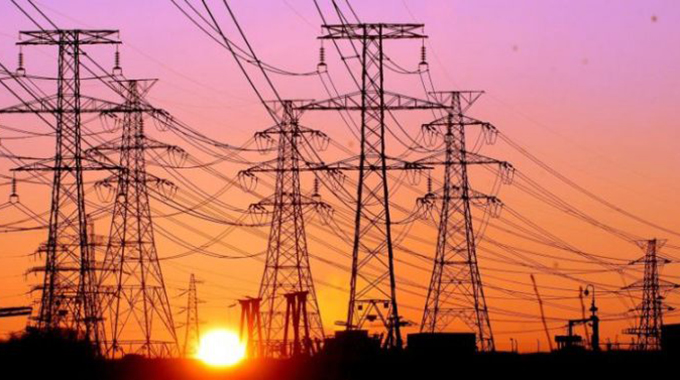
BY KUDZAI KUWAZA
STRUGGLING national power utility Zesa Holdings has extended a plea for help to big miners by constituting a group called the Energy Intensive Users Group (EIUG) to provide off-take guarantees in hard currency for joint access to power as electricity shortages wreak havoc in the country, the Zimbabwe Independent has established.
The country is currently grappling with frequent power cuts, which have further burdened its fragile economy, buffeted by several headwinds, among them, a debilitating liquidity crunch, foreign currency shortages, currency distortions and runaway inflation that has severely eroded incomes.
According to the Zimbabwe National Chamber of Commerce (ZNCC), power cuts have pushed production costs up by 150%.
According to minutes of an April 26, 2022 meeting held at Zesa National Training Centre seen by the Independent, the EIUG draft constitution was circulated with consent obtained from the Ministry of Energy and Power Development.
The entities, it was revealed at the meeting, can import power upon approval from the Zimbabwe Energy Regulatory Authority (Zera) as prescribed in the Electricity Act and can hold funds outside the country.
The motion to adopt the constitution of the EIUG was carried at the meeting with Trojan, Afrochin, Blanket, Turk and Rio Zimbabwe in support. Zimplats, however, abstained.
According to the minutes, the meeting suggested the appointment of four members as EIUG inaugural board members and a further three members being appointed at a later date.
- Chamisa under fire over US$120K donation
- Mavhunga puts DeMbare into Chibuku quarterfinals
- Pension funds bet on Cabora Bassa oilfields
- Councils defy govt fire tender directive
Keep Reading
Representatives of Blanket, Afrochin, Riozim and Eureka mines were subsequently nominated and declared inaugural members of the EIUG board, while the secretariat would be determined later by the board. But, in the meantime, it would continue to be provided by Zesa.
The EIUG chairperson and deputy will be elected soon.
Zimplats, Unki and Mimosa mines were urged to have at least one member on the board to represent their interests since they have the largest consumption.
Zesa Holdings consultant Cletus Nyachowe said the group was expected to play a leadership role in alleviating the energy crisis in the country.
“Users with energy consumption of more than five megawatts have been invited to the meeting. The group will have the power to conduct its own imports,” Nyachowe said at the meeting.
“Zesa will be facilitating external and internal independent power producers (IPP), balancing power and regulating wheeling charges.”
He revealed that applications for three new large connections have been received by the state power utility, adding that 94 Independent Power Producers (IPPs) are currently on hold.
Zimbabwe Electricity Transmission and Distribution Company (ZETDC) acting managing director Howard Choga said at the meeting that in 2021 the peak demand for electricity reached 1 730 megawatts while the lowest demand stood at 1 500 megawatts, which indicated growing demand.
He further revealed that for the 2022 winter period there was projected demand of 2 000 megawatts, which will lead to load shedding.
However, Choga said from recently received applications, a load growth of 2200 megawatts is expected over the next three years.
He noted that the EIUG is expected to have Power Purchase Agreements as a regional off-take, both in Zimbabwe and externally.
ZETDC director John Diya said off-take guarantees are an essential part of improving the viability of energy projects in the region, adding that 750 megawatts is the current limit on power imports dictated by stability concerns.
Zesa Stakeholder Relations and Communications Welfare general manager George Manyaya told the Independent that the project was still at its embryonic stage.

“It is a pilot project. It may or may not take off,” he said.
The power utility is currently in need of about US$2,5 billion to end load shedding and is battling to get from the central bank its monthly requirement of US$17 million to import electricity.
The need to import electricity is being driven by the prevailing power deficit of about 1 600MW, owing to increased demand and depressed power generation from both hydro and thermal energy sources.
News that Zesa was struggling to operate was first revealed by the Auditor-General’s (AG) office in its State Enterprises and Parastatals reports.
In the AG’s 2020 report For Appropriation Accounts Finance Accounts Revenue Statements and Fund Account, Zesa had foreign loans of US$1,1 billion in the form of interest on outstanding loans advanced to the power utility by the government.
The loans were for the refurbishment of substations, power station upgrading and construction of substations.
In its 2019 State Enterprises and Parastatals report, following the reintroduction of the Zimbabwean dollar, the Auditor-General found Zesa’s current liabilities exceeded its current assets by ZW$3,2 billion (US$22,6 million).
This was from the 2018 comparative of ZW$1,5 billion (US$10,5 million).
For the year 2019, the group also posted an operating loss before tax of ZW$2,3 billion (US$16,1 million), meaning over the past few years the company has been struggling to stay afloat.
Further, Zesa is owed over ZW$15 billion (US$105 million) by consumers in both the private sector and government for non-payment for electricity supply.
Another major challenge for the power utility is its inability to charge a cost-effective tariff where Zesa requires foreign currency for its operations but charges its tariff in local currency.
Many businesses, including miners, have reverted to alternative power sources, such as fuel-powered generators, which have become even more expensive to operate given the increase in global oil prices that have rippled to the local US dollar pump prices.






